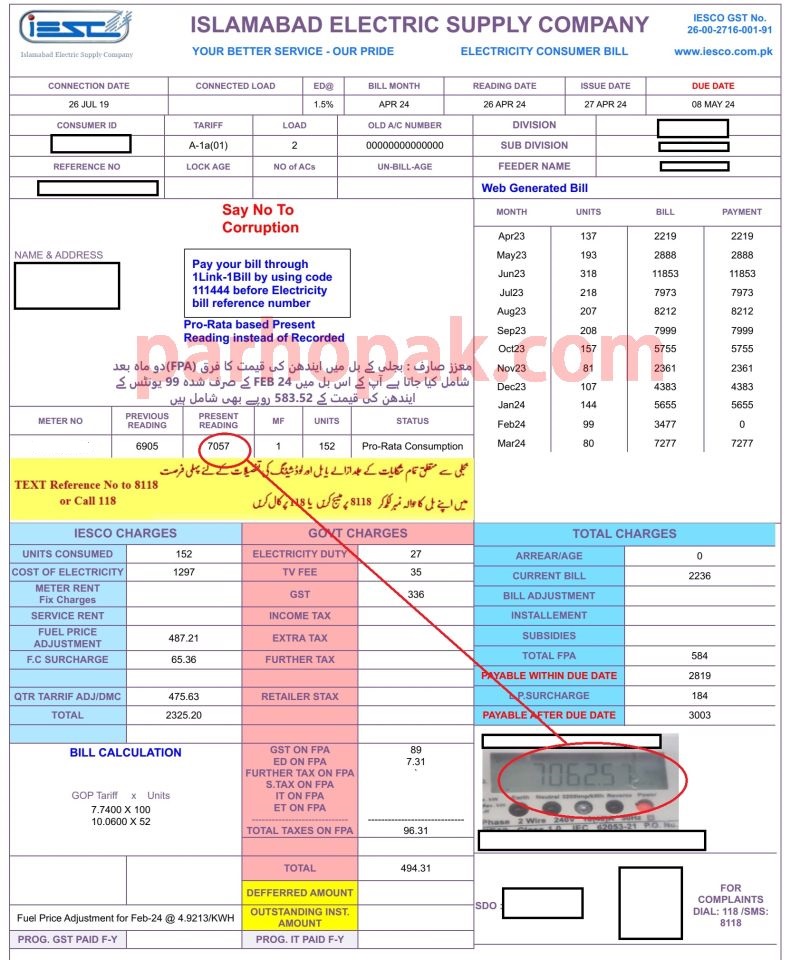Electricity Billing
A probe led by the Federal Investigation Agency (FIA) has blamed the so-called ‘pro rata system’ for over-billing electricity consumers in the country, especially those previously covered under the non-protected category.
The pro rata system used for the calculation of electricity tariff slabs catapulted hundreds of thousands of consumers from “protected” slabs to non-protected slabs, causing their electricity bills to skyrocket. Reports indicate that the government is planning to scrap the system.
In its report to the prime minister, the FIA stated that the pro rata system, introduced by the energy ministry, precipitated hefty bills. Consequently, people in the energy ministry should be held responsible for this issue.
Pro rata is a relatively new term for most Pakistanis, so you may wonder what it means in the context of power consumption. In simple terms, pro rata refers to an “average” estimate of daily electricity consumption. The term pro rata means proportionally.
Examples of the Pro Rata System
If you are a millennial, you may recall that electricity bills used to include a column about meter reading modes, often labeled “average.” This meant that the power distribution company was sending you an electricity bill without physically checking the meter reading.
The “average” bill was based on your typical power consumption pattern. For instance, if you consumed 120 units (kilowatt-hours) per month, you were billed for the same number of units during months when the electricity utility did not take the meter reading.
This practice changed when the regulatory authority introduced strict rules about meter readings. According to NEPRA rules, the billing cycle for electricity is always 30 days.
Instead of sending an average bill, power distribution companies were required to take meter readings and bill you only for the electricity consumed within those 30 days. To ensure accuracy, the rule stipulated that power companies also take a picture of the meter each month and print it on the bill.
However, it is challenging for any utility to take readings exactly every 30 days. The meter reader could be late or early by a day or two. Thus, the pro rata system was introduced.
If the meter-reading date for your neighborhood is the 10th of every month, but the meter reader takes the reading on the 8th — two days earlier — the electricity bill will include additional units for the remaining two days. The power distribution company calculates these units by averaging your consumption over the previous 28 days.
For example, if you consumed 280 units between May 11 and June 8, your average daily consumption is 10 units. The meter reader takes a snapshot of your meter on June 8, and the power company sends you a bill for 300 units based on their pro rata calculation, even though the picture may show only 280 units consumed.
Similarly, if the reading is taken after 31 days — say on June 12 — the picture may show 320 units consumed, but you should be billed for only 300 units. If the power company bills you for more than 300 units, your tariff slab changes, and you will have to pay around Rs3.5 extra per unit. After adding taxes, the extra amount per unit increases significantly.
This issue is more pronounced for protected consumers, who pay Rs10 per unit if their monthly consumption stays between 100 and 200 units for six consecutive months. If a pro rata estimate concludes they used more than 200 units in a month, they lose their protected status, and the per-unit electricity price jumps to Rs27.
This, coupled with taxes, can double their monthly bill from around Rs2,000 to approximately Rs6,000. They also lose the protected status for the next six months, leading to a potential loss of Rs24,000 for a single consumer.
Punjab Opposition Leader Malik Ahmed Khan Bhachar claimed that 326,000 consumers lost their protected status because meter readings showed they consumed just three units more than the 200-unit threshold.
Does Pro Rata Mean Over-Billing?
Pro rata calculation does not necessarily imply that power distribution companies are engaged in over-billing. The system is erroneous because it leaves room for inaccurate billing. For example, if a consumer completely stops using electricity after 28 days of the billing cycle, should they still pay for 300 units when they only consumed 280 units?
It is important to note that this adjustment in units is not an overcharging practice by electricity companies like IESCO, FESCO, LESCO, PESCO, and K-Electric. Instead, it is a mechanism to ensure billing aligns with the 30-day NEPRA rule and, in some cases, may even benefit consumers.


